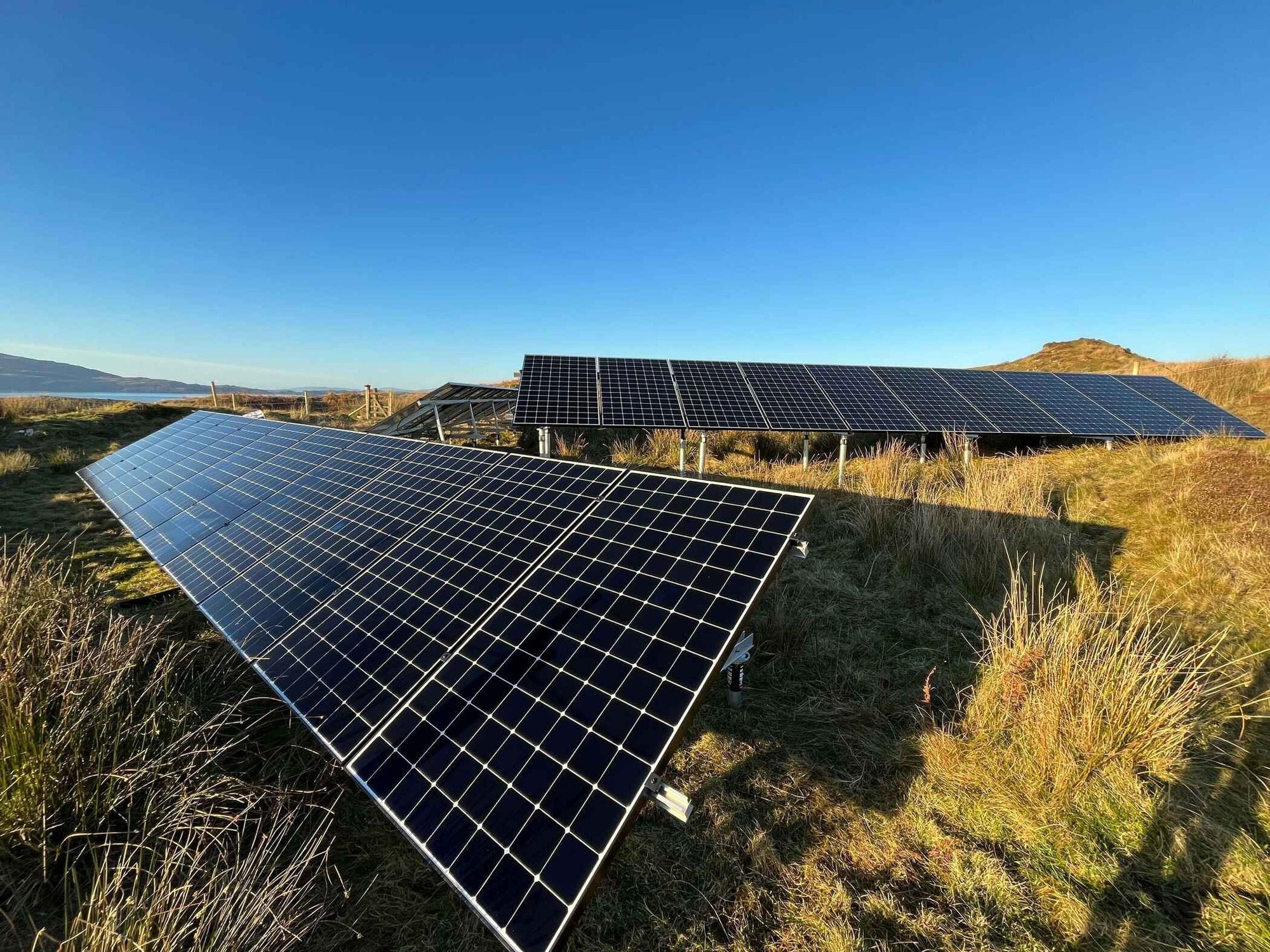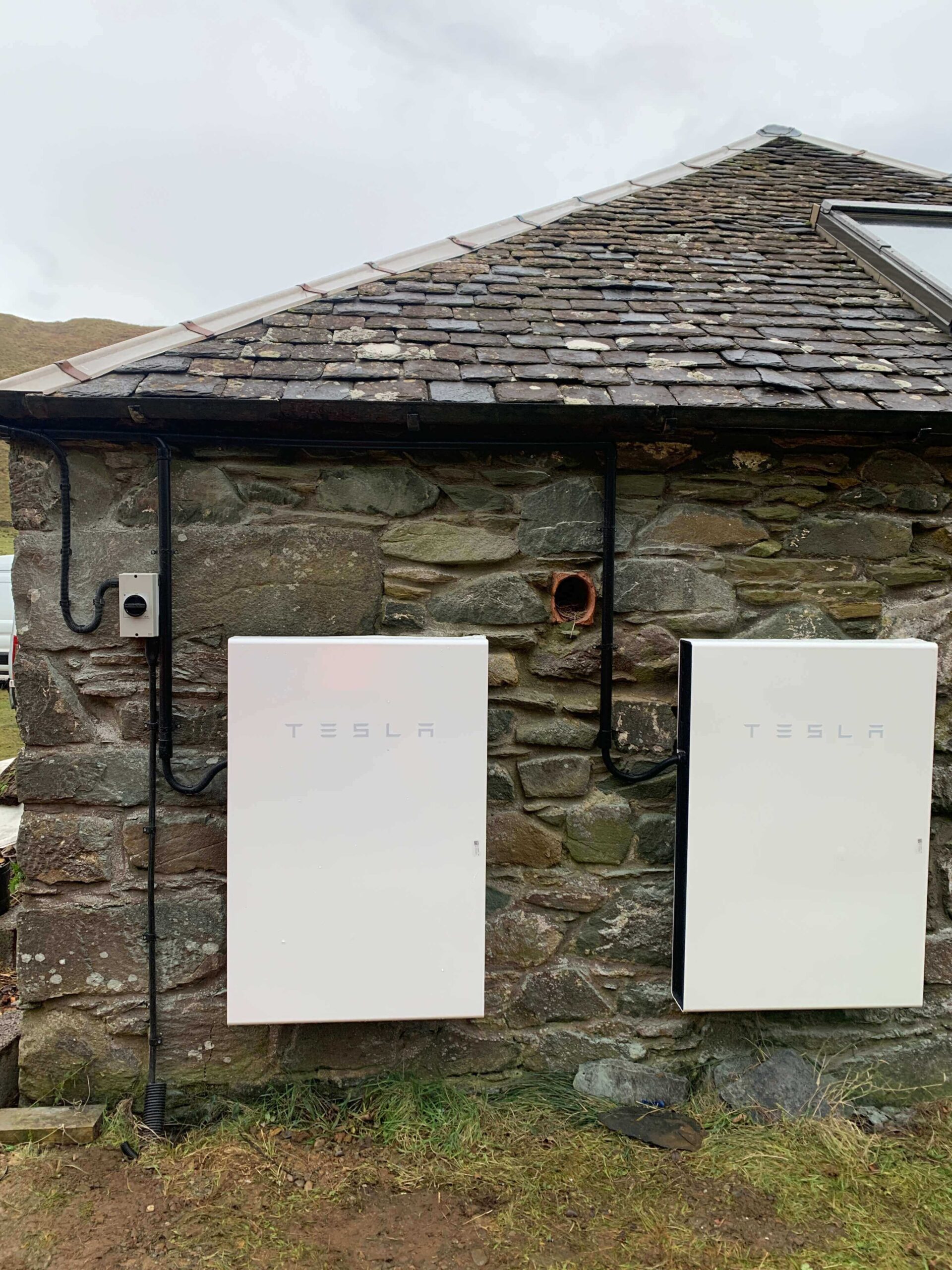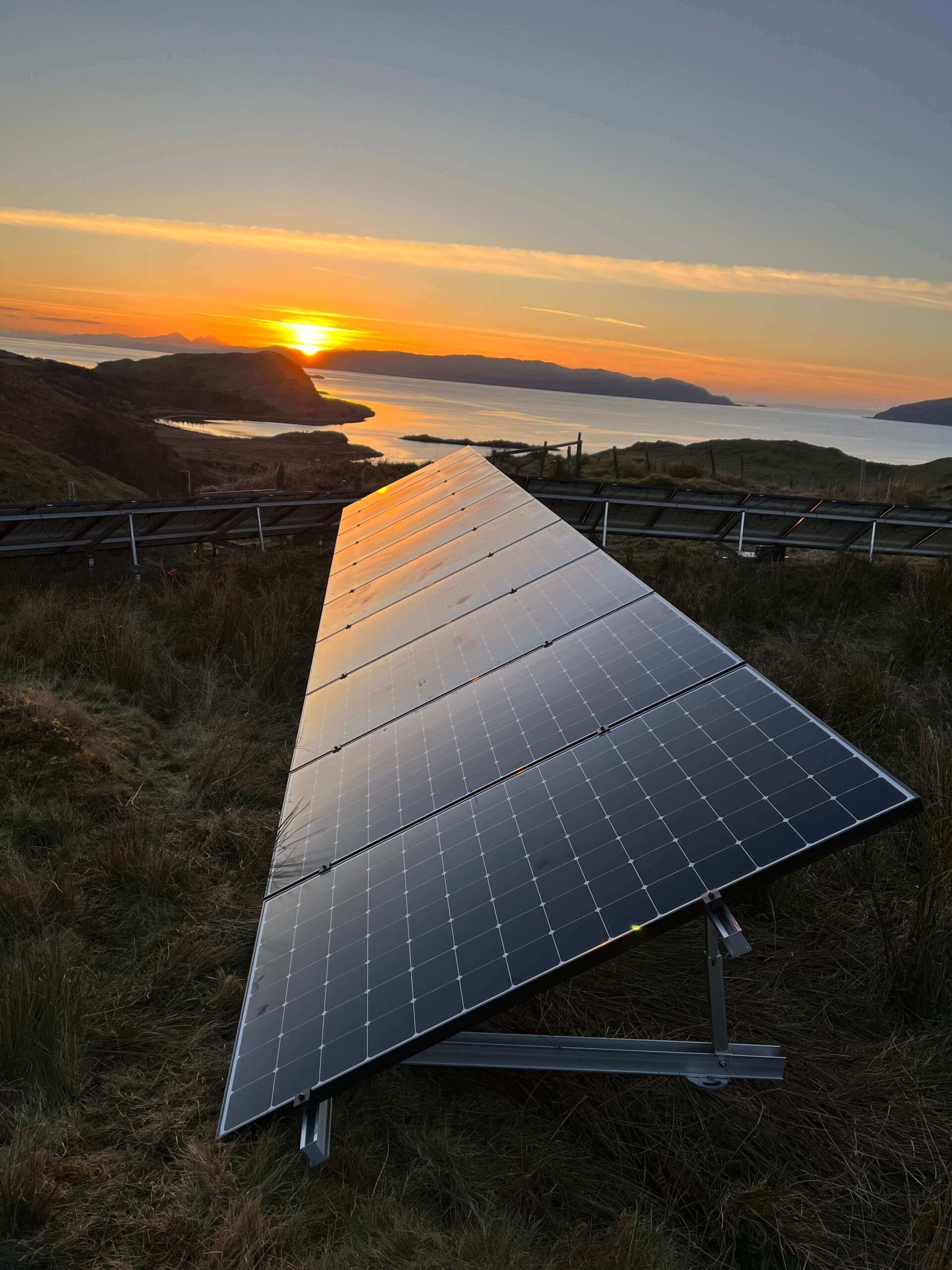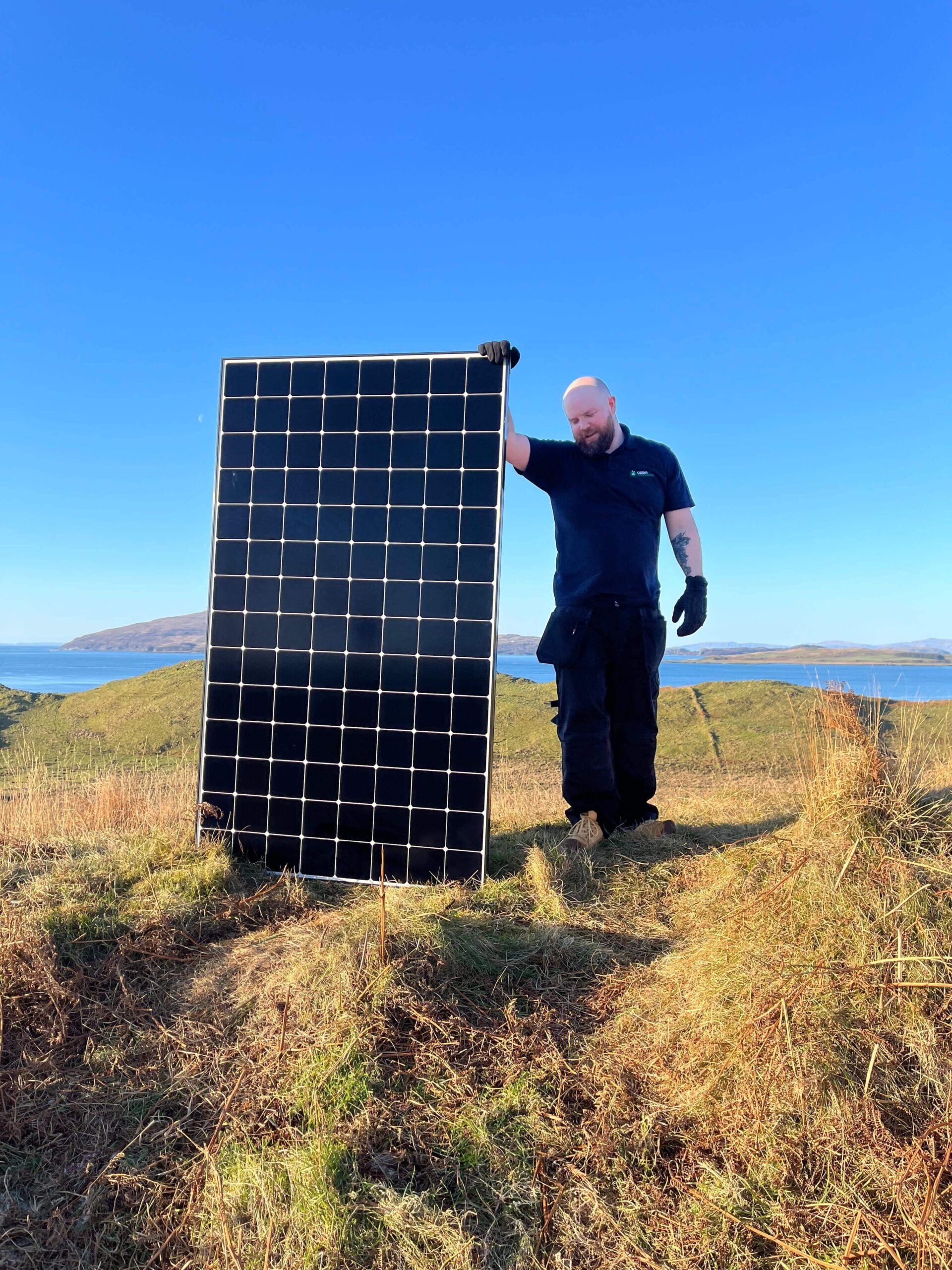
Client
Residential Client – Solar PV & Battery Storage System in Argyll and Bute
Key statistics
Installed
- 12.75kWp Solar PV
- 30 x SunPower Maxeon MAX3-425W
- 30 x Solaredge Optimisers
- Solaredge SE6000H inverter
- 2 x Tesla Powerwalls (27kWh) of Battery Storage
- 1 x Zappi 7kW EV Charger
Energy production & environmental impact
- Estimate saving of 9,700kWh pa
Background
Ceiba Renewables were appointed by a private customer to advise on the installation of Solar PV, for a remote residential property on the Isle of Arran. After finally being connected to the National Grid a few years before, the house still experienced frequent power cuts, with minimal support available due to its remote location.
As a result, the customer was keen to become independent from the National Grid and realise as many cost-savings as possible by investing in the best of technology.
The Install
The unique location of the home presented us with a few challenges when trying to design the right solution for the customer. The property was accessible via a 2km dirt track that was more suited to a tractor than one of our vans. The house was shaded by a large hill to the south of the property. Immediately to the north of the property was another steep hill which should really be defined as a cliff rising 30m above the house to the rear.
We therefore had to be innovative with the placement of the Solar PV panels to catch the sun, and work with local contractors who specialised in the landscape to help us with the associated groundwork.
After submitting the G99 grid application, SSE informed us that the maximum power output allowed from the solar inverter was 6kW. Given the customer has asked for as large a solar PV and storage system as possible, this presented another challenge. We came up with a unique solution that allowed the 30 solar panels to be split into three areas, each capturing the sun most effectively at a different time of day. This, combined with a Solaredge inverter and power optimisers allowed us to realise as much solar generation as possible for the customer, within the limits placed on us by SSE.
It was a sizeable task, and one that allowed us to exercise our excellent organisational skills. From start to finish we liaised with multiple contractors, on-site team, and the customer to get the install completed in a timely and professional manner – which the customer was most grateful for.
The Results
The project successfully reduced the customer’s reliance on the Grid and provided the client with a powerful, long-lasting and efficient system to secure energy for his home, long into the future.
Beyond achieving the customer’s desired results, it was an excellent test for our team to find a solution when faced with numerous challenges. This project now acts as a case study in best practice for rural areas and remote properties – one which can be replicated for properties across rural parts of Scotland and its islands.
Mr Carse commented:
“Originally built in the 18th century our farmhouse sits at the end of a 2km farm road, looking out to the islands of Scarba and Jura. When we first moved here there was no running water, let alone electricity. We ran on a 7,5kva Lister generator for years, cooked and heated with Calor gas and even had a gas powered fridge.
As part of a rural, remote scheme, we were eventually connected to the electricity grid. However, being in a remote location, at the end of the power line, in the winter months, we experience power cuts. As a single house, we are not a high priority, and when power is restored to the nearby village, it can take a day or two longer for us to get back online.
For a couple of years, we have been considering reducing our reliance on the grid and our fossil fuel usage.
The recent installation of solar panels and Tesla Powerwalls has made a dramatic difference to how we run the house and our energy costs. Since the installation in December, we have net exported 0.7 MWh. We have migrated away from using gas to heat water and reduced the amount of time the central heating runs, instead heating rooms with electric heaters.
The fear of power cuts is no longer a concern.
There is also something particularly satisfying in being able to charge our EV from spare solar capacity and drive on sunshine!”



